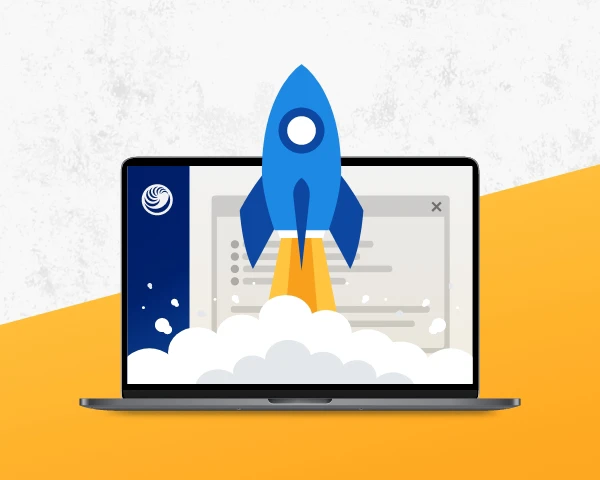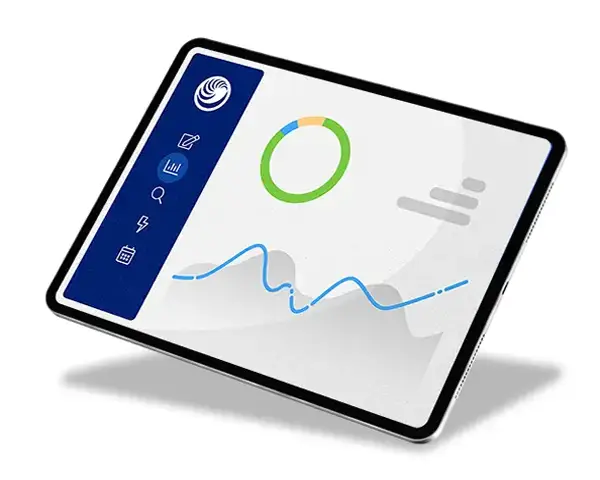It "is pushing its way into classrooms nationwide. Its fans argue that it will expand and invigorate the way many subjects are taught because it puts the entire world at students' fingertips. Skeptics call it technological razzle-dazzle that will ultimately only distract children from learning."1
This quote from a New York Times article about integrating modern technology in K-12 schools perfectly describes the conflict many educators and parents feel regarding AI in the classroom. They fear AI’s negative impact on education while also understanding that it allows for countless possibilities. This is especially the case in Advanced Placement® (AP) courses, where many fear AI could negatively affect a student's ability to demonstrate higher levels of thinking or simply "cheat" their way through college-level assignments.
There's just one thing — the Times article was written in 1993, and it wasn't debating the use of AI in classrooms but instead talking about using the internet in the classroom. This debate seems laughable now, as most modern K-12 schools not only allow the utilization of the internet but actually require it. In 30 years, will educators and parents feel the same way about using AI in education?

The (Not-So) Modern Fear of Modern Technology in Education

In AP classrooms, concerns about AI often focus on students potentially using the tool to write essays, solve complex math problems, or generate complete assignments in a quarter or less of the time it would take them to use their human brains. These fears mirror past anxieties over the internet in the '90s, calculators in the '70s, and educational television in the '50s.2
These technologies were initially met with skepticism and dire predictions about the erosion of effective teaching methods. Such debates are a recurring part of educational progress, fueled by the desire to ensure students truly learn and develop critical skills. Discussions around AI — its ethical implications, limitations, and role in education — are important to help students navigate its potential responsibly and productively.
AI's permanence in education doesn't have to be perceived as a threat. It can instead represent a significant opportunity. The College Board® has embraced this perspective with the launch of its GenAI Studio,3 a resource designed to help AP educators integrate AI thoughtfully and effectively into their classrooms.4
By guiding your students in the ethical and critical use of AI, you can transform this resource from a perceived challenge into a powerful tool for personalized learning, innovation, and skill development. History has shown that when new technologies are approached with intention and care, they often enhance education rather than hinder it. AI is poised to do the same.
The Goldilocks Approach to AI in the AP Classroom
AP educators face 3 main approaches when addressing AI use in their classrooms: banning it outright, allowing unrestricted access, or finding a balanced middle ground.
Abstain from AI Completely
Prohibiting AI use in AP classrooms might seem like a simple, black-and-white solution, but it's unlikely to succeed and could have unintended consequences. Many AP students already use AI tools such as ChatGPT and openly discuss their experiences on Reddit and other platforms.5 While some may misuse AI to avoid doing their work, others use this tool to deepen their understanding and prepare for exams.6 A blanket ban risks alienating students and driving these behaviors underground, leaving educators unable to guide ethical and effective AI use.
Banning AI entirely also undermines the purpose of AP courses: to prepare your students for the challenges of college and careers. AI literacy is quickly becoming a critical skill, and denying students the chance to develop this competency puts them at a disadvantage compared to their peers. With nearly half of high school students already utilizing AI for academic purposes, such bans could exacerbate inequalities, as students with more resources will continue accessing these tools outside of school.7

Use AI Without Boundaries
Giving your students free rein to use AI tools without guidance can lead to missed opportunities and unintended consequences. A key issue is the risk of misinformation — AI systems, while powerful, are prone to errors and can generate misleading or inaccurate content. Without instruction on how to critically evaluate AI outputs, students may unknowingly incorporate false information into their work, undermining their learning and credibility. Ethical concerns are also at play, as unchecked AI use can expose students to reinforcing biases or mishandling sensitive data.
Unsupervised AI use can further encourage academic shortcuts, too, with students bypassing essential intellectual processes that build critical thinking and problem-solving skills needed for college and professional life. This reliance on AI may also weaken motivation, as students could see little value in mastering material when a tool offers quick answers.
Educators also likely lack the training needed to help students navigate these "new" tools responsibly, so avoiding the topic of AI on a district and/or campus level can leave students and teachers ill-equipped to handle the complexities of AI in education. Districts can support their teachers with AI training for education, such as "Generative AI for Educators," a free self-paced course on AI tools designed by Google and MIT.7 To ensure AI enhances rather than hinders, structured policies and targeted education on responsible use are essential.
Find AI Balance
AP classrooms can thrive by teaching your students how to engage with these tools responsibly and effectively. This means helping students understand AI's strengths, limitations, and potential biases while encouraging them to think critically about its outputs. With this guidance, students can integrate AI thoughtfully into their learning, gaining valuable skills for a future where AI is a cornerstone of academia and the workplace. This approach also promotes meaningful discussions around ethics, data privacy, and technology's broader impact on society.
Incorporating AI literacy into the curriculum fosters equity and expands learning opportunities for all students. While nearly half of high schoolers already use AI, those with more academic resources often benefit disproportionately.8 By embedding AI education in classrooms, schools can bridge this gap and empower every student to use it effectively. Responsible AI use supports personalized learning, sparks creativity, and builds essential skills while reducing misuse and dependency.
By prioritizing this balanced approach, you can ensure your students are prepared for success in an AI-driven world, all while maintaining academic integrity and critical thinking.
Working With — Not Against — AI in the AP Classroom
AP educators have the opportunity to guide students in using AI responsibly while unlocking its potential as a transformative learning tool. If you take the time to set clear boundaries surrounding AI using ethics and efficacy strategies, it can foster personalized learning, sharpen critical thinking, and enhance skill development, positioning it as a valuable asset in the AP classroom.
| Strategies to Promote AI Ethics | Strategies to Promote AI Efficacy |
|---|---|
| Clear guidelines: Develop and communicate explicit policies on acceptable and unacceptable uses of AI tools in assignments. | Personalized learning: Use AI-driven insights to adapt learning materials and address individual student needs. |
| Foster AI literacy: Teach students about AI's capabilities, limitations, and ethical considerations to promote responsible use. | Lesson planning: Generate interactive presentations and lessons on complex AP topics using AI tools. |
| Timed assignments: Use timed exams and in-class writing to reduce reliance on AI tools and encourage independent work. | Text differentiation: Adapt complex texts or captions to varied reading levels for more accessible AP content. |
| Personalized assignments: Create tasks tied to each student's experiences or interests, making AI-generated content less applicable. | Writing feedback: Provide targeted feedback on AP essays and short answer questions using AI assistance. |
| Work process evidence: Require students to submit step-by-step documentation or photos showing their work progression. | Test preparation: Generate practice questions tailored to specific AP exams using AI tools. |
| Visual elements: Use diagrams, graphs, or images that require interpretation, which AI tools cannot easily replicate. | Content creation: Develop study guides, quizzes, and tailored chats aligned with AP curriculum requirements. |
| Project-based learning: Assign real-world challenges and presentations to demonstrate student understanding and creativity. | Multilingual support: Use AI translation features to accommodate diverse AP classrooms effectively. |
| Instructor conferences: Hold 1-on-1 or group meetings to review progress and drafts and provide tailored feedback. | Grading assistance: Streamline grading with AI to provide quick, actionable feedback for students. |
| Scaffolded tasks: Break assignments into smaller steps with interim deadlines and specific feedback to guide learning. | IEP support: Assist with creating individualized education plans using AI-based tools for students with learning needs. |
| Portfolio assessments: Encourage students to compile a collection of work showcasing growth, reflection, and skill mastery. | Subject-specific help: Employ pre-trained AI tools specialized in AP subjects like Computer Science or U.S. History. |
By leveraging AI as a resource for ethical and impactful learning, you can prepare students for success in an AI-powered future. Discover how UWorld's Courses for AP provide cutting-edge tools to support your teaching and empower your students to excel on their AP exams and beyond.

Frequently Asked Questions (FAQs)
How can AI help with AP test preparation or Exam scores?
Utilizing AI in the classroom can transform AP test preparation by creating personalized study plans tailored to each student’s strengths and areas for improvement. AI tools for high school students analyze performance data to recommend targeted resources, practice questions, and review materials, helping boost engagement and enhance overall exam readiness.
Are AI tools expensive for schools?
Many AI tools for teaching are available at little to no cost, making them accessible to educators and schools regardless of budget constraints. Free or affordable plans often provide essential features that support student engagement and personalized learning, ensuring AI can be integrated without significant financial investment.
Can AI tools work for all subjects in AP courses?
Yes, all AP subjects can use AI for student engagement, from STEM fields like AP Physics to humanities courses such as AP U.S. History. AI tools for teaching are designed to adapt to various subjects by generating study guides, interactive lessons, and practice exams that align with the specific content and skills required for each AP course.
References
- Nytimes.com. (2024). Retrieved from https://www.nytimes.com/1996/03/07/nyregion/the-internet-goes-to-school-bellwether-or-bust-educators-debate-value-of-surfing.html
- Scientificamerican.com. (2024). Retrieved from https://www.scientificamerican.com/article/ai-can-transform-the-classroom-just-like-the-calculator/
- Allaccess.collegeboard.org. (2024). Retrieved from https://allaccess.collegeboard.org/values-driven-approach-ai-classroom
- Apcentral.collegeboard.org. (2024). Retrieved from https://apcentral.collegeboard.org/help-center/what-acceptable-use-ai#:~:text=Students%20can%20use%20AI%20tools,rewriting%E2%80%94for%20grammar%20and%20tone
- Reddit.com. (2024). Retrieved from https://www.reddit.com/r/APStudents/comments/16zgaoi/ai_and_ap/
- Geekwire.com. (2024). Retrieved from https://www.geekwire.com/2024/ai-for-ap-high-school-students-create-tool-that-acts-as-tech-tutor-for-advanced-placement-courses/
- Google. (n.d.). AI for educators. Retrieved December 9, 2024, from https://grow.google/ai-for-educators/
- Leadershipblog.act.org. (2024). Retrieved from https://leadershipblog.act.org/2023/12/students-ai-research.html
- Informationmatters.org. (2024). Retrieved from https://informationmatters.org/2023/11/toward-ethical-use-of-generative-ai-in-ap-courses/
- Apcentral.collegeboard.org. (2024). Retrieved from https://apcentral.collegeboard.org/exam-administration-ordering-scores/administering-exams/preparing-for-exam-day/exam-security/artificial-intelligence-tools




